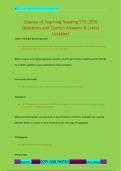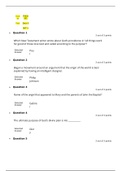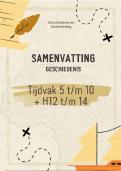Samenvatting
Summary Chapter 6: Persuasion and attitude change; Social and cross-cultural psychology
- Instelling
- Rijksuniversiteit Groningen (RuG)
This summary covers the 6th chapter of the book Social psychology by Hogg and Vaughan, 9th edition.
[Meer zien]













